Birdfinding.info ⇒ The Hawaii Creeper remains locally common in a few areas, but most are not publicly accessible. It can be found on tours of the restricted Pua Akala Tract in Hakalau Forest National Wildlife Refuge. With some effort and luck it can also be found at the publicly accessible kipuka along Saddle Road, especially along the Pu’u O’o Trail.
Hawaii Creeper
Manucerthia mana
Endemic to the Big Island of Hawaii, where it occurs in koa and ohia forests, mostly in the band between about 1,500 and 1,900 m elevation.
Formerly regarded as abundant at elevations above 600 m throughout the island, but in the early 1900s its decline was evident, and by the 1970s it had retreated to four areas: (1) the eastern slopes of Mauna Kea from the Hakalau Forest National Wildlife Refuge south to the Upper Waiakea Forest Reserve; (2) Ka’u and Kapapala Forest Reserves on the southeastern slopes of Mauna Loa; and (3) the southern Kona highlands, on the western slopes of Mauna Loa; and (4) the northern Kona highlands, on the northern slopes of Hualalai.
In the early 1980s the total population was estimated at approximately 12,500, and it appears to have remained stable in most areas, but has apparently vanished from the northern Kona highlands.
Identification
A small olive-and-gray honeycreeper with a sharp-tipped, conical, slightly decurved, pale bill.
Adult plumage is mostly olive above and below, with a blackish mask that contrasts with a pale eyebrow. The facial pattern is sometimes clearly defined and sometimes not.
Immatures share the same pattern as adults but are plainer, mostly brownish-gray above and whitish-gray below.

Hawaii Creeper. (Hakalau Forest National Wildlife Refuge, Big Island, Hawaii; September 17, 2018.) © Bradley Hacker

Hawaii Creeper. (Pua Akala Tract, Hakalau Forest National Wildlife Refuge, Big Island, Hawaii; June 4, 2018.) © Fred Hochstaedter
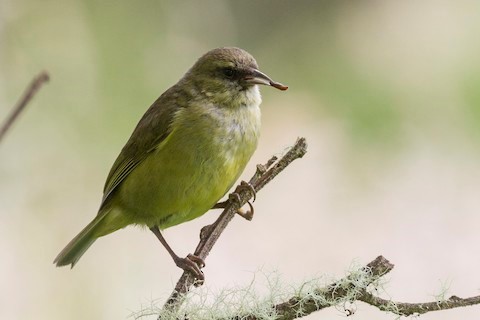
Hawaii Creeper. (Pua Akala Tract, Hakalau Forest National Wildlife Refuge, Big Island, Hawaii; July 2, 2016.) © Jacob Drucker
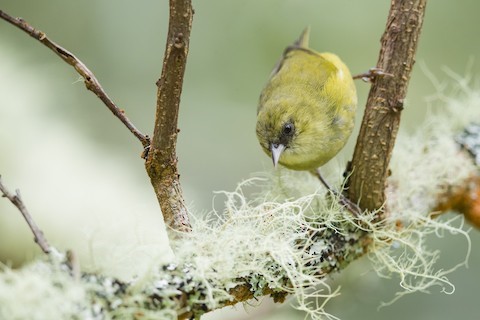
Hawaii Creeper. (Pua Akala Tract, Hakalau Forest National Wildlife Refuge, Big Island, Hawaii; March 22, 2019.) © Ryan Sanderson

Hawaii Creeper, creeping like nuthatch. (Pua Akala Tract, Hakalau Forest National Wildlife Refuge, Big Island, Hawaii; November 28, 2015.) © Alan Van Norman

Hawaii Creeper. (Pua Akala Tract, Hakalau Forest National Wildlife Refuge, Big Island, Hawaii; June 4, 2018.) © Fred Hochstaedter

Hawaii Creeper. (Hakalau Forest National Wildlife Refuge, Big Island, Hawaii; September 17, 2018.) © Bradley Hacker

Hawaii Creeper. (Pua Akala Tract, Hakalau Forest National Wildlife Refuge, Big Island, Hawaii; June 4, 2018.) © Fred Hochstaedter
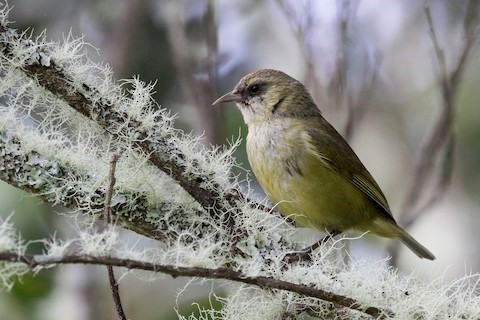
Hawaii Creeper. (Pua Akala Tract, Hakalau Forest National Wildlife Refuge, Big Island, Hawaii; July 2, 2016.) © Jacob Drucker
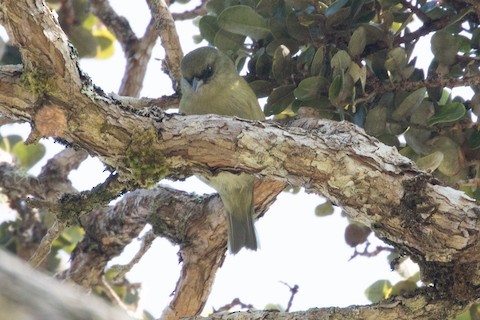
Hawaii Creeper. (Hakalau Forest National Wildlife Refuge, Big Island, Hawaii; November 11, 2016.) © Bob & Bettina Arrigoni

Hawaii Creeper, creeping like nuthatch. (Pua Akala Tract, Hakalau Forest National Wildlife Refuge, Big Island, Hawaii; March 22, 2019.) © Ryan Sanderson

Hawaii Creeper. (Pua Akala Tract, Hakalau Forest National Wildlife Refuge, Big Island, Hawaii; March 22, 2019.) © Ryan Sanderson
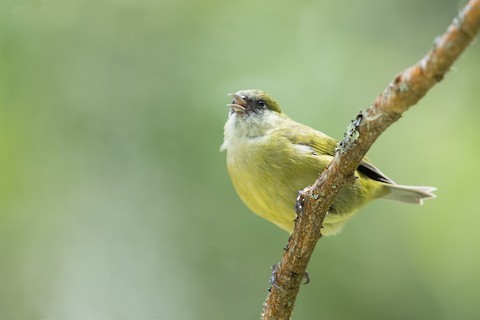
Hawaii Creeper. (Pua Akala Tract, Hakalau Forest National Wildlife Refuge, Big Island, Hawaii; March 22, 2019.) © Ryan Sanderson

Hawaii Creeper. (Hakalau Forest National Wildlife Refuge, Big Island, Hawaii; July 10, 2018.) © Mark Scheel
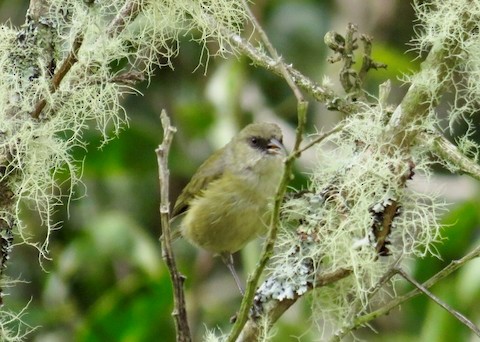
Hawaii Creeper. (Pua Akala Tract, Hakalau Forest National Wildlife Refuge, Big Island, Hawaii; August 9, 2017.) © Victor Stoll
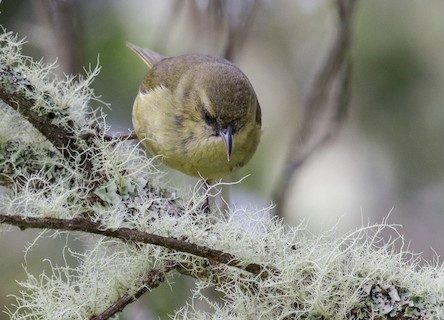
Hawaii Creeper, a nondescript brownish bird, but note the pale eyebrow. (Pua Akala Tract, Hakalau Forest National Wildlife Refuge, Big Island, Hawaii; July 2, 2016.) © Jacob Drucker
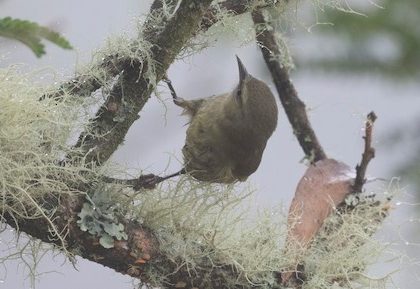
Hawaii Creeper. (Pua Akala Tract, Hakalau Forest National Wildlife Refuge, Big Island, Hawaii; September 20, 2017.) © Brian Sullivan
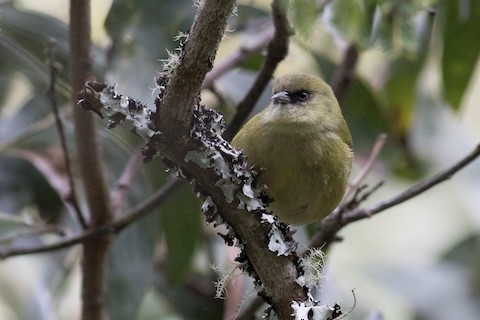
Hawaii Creeper. (Hakalau Forest National Wildlife Refuge, Big Island, Hawaii; March 19, 2019.) © Jacob Drucker
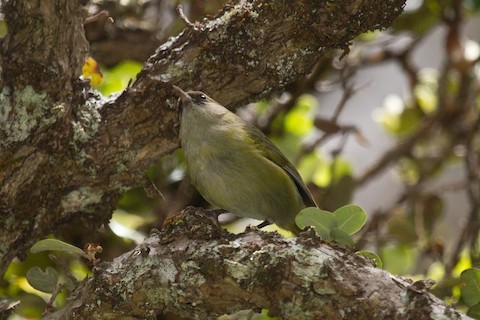
Hawaii Creeper, showing mostly grayish underparts with a localized olive wash. (Pua Akala Tract, Hakalau Forest National Wildlife Refuge, Big Island, Hawaii; March 13, 2014.) © Eric VanderWerf
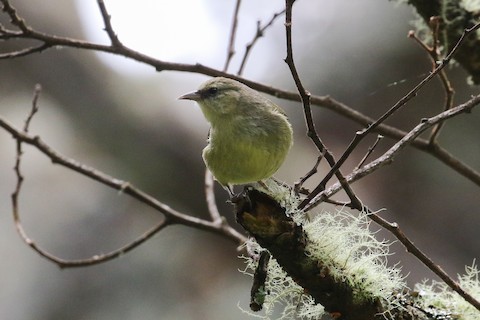
Hawaii Creeper. (Hakalau Forest National Wildlife Refuge, Big Island, Hawaii; April 9, 2019.) © Chris Benesh
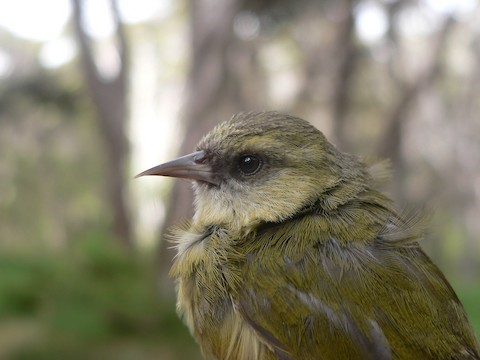
Hawaii Creeper, possible immature—note unevenly distributed olive coloration. (Pua Akala Tract, Hakalau Forest National Wildlife Refuge, Big Island, Hawaii; March 14, 2012.) © Nicholas Sly

Hawaii Creeper, possible immature—note unevenly distributed olive coloration. (Pua Akala Tract, Hakalau Forest National Wildlife Refuge, Big Island, Hawaii; November 28, 2015.) © Alan Van Norman
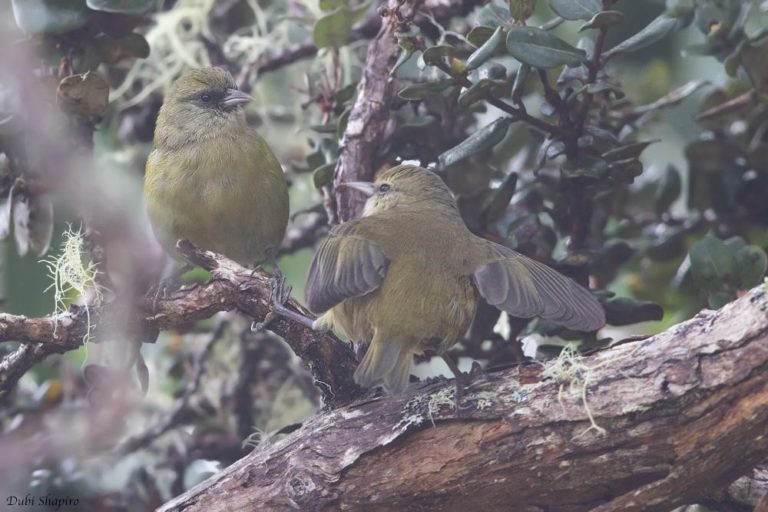
Hawaii Creeper, adult and immature. (Hakalau Forest National Wildlife Refuge, Big Island, Hawaii; August 11, 2018.) © Dubi Shapiro

Hawaii Creeper, immature. (Pua Akala Tract, Hakalau Forest National Wildlife Refuge, Big Island, Hawaii; September 20, 2017.) © Brian Sullivan
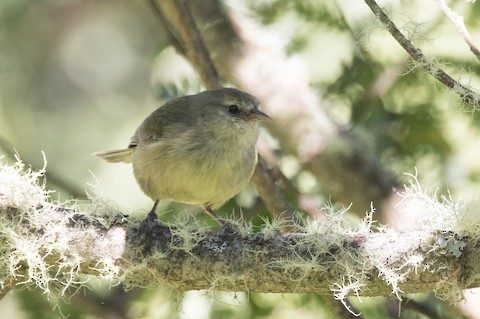
Hawaii Creeper, immature. (Hakalau Forest National Wildlife Refuge, Big Island, Hawaii; November 11, 2016.) © Bob & Bettina Arrigoni
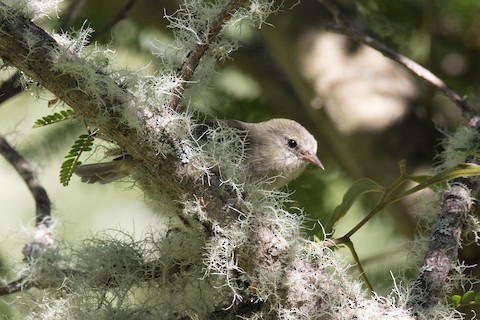
Hawaii Creeper, immature. (Hakalau Forest National Wildlife Refuge, Big Island, Hawaii; November 11, 2016.) © Bob & Bettina Arrigoni
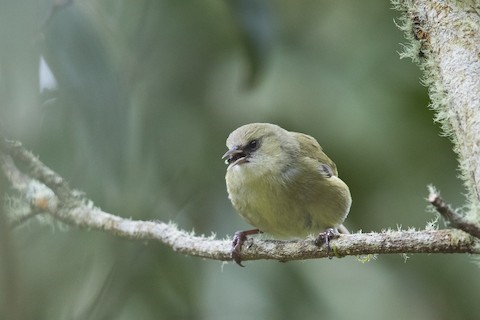
Hawaii Creeper. (Pua Akala Tract, Hakalau Forest National Wildlife Refuge, Big Island, Hawaii; March 22, 2019.) © Ryan Sanderson

Hawaii Creeper, immature showing no facial markings. (Hakalau Forest National Wildlife Refuge, Big Island, Hawaii; September 17, 2018.) © Bradley Hacker
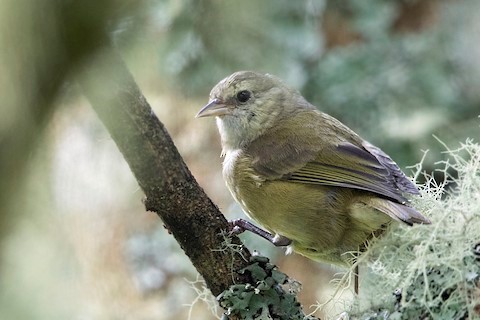
Hawaii Creeper, immature with a mostly whitish face. (Hakalau Forest National Wildlife Refuge, Big Island, Hawaii; September 17, 2018.) © Bradley Hacker
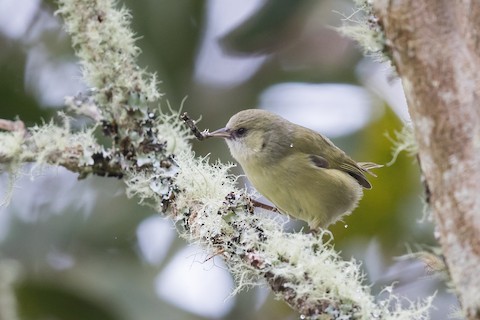
Hawaii Creeper, immature. (Pua Akala Tract, Hakalau Forest National Wildlife Refuge, Big Island, Hawaii; March 22, 2019.) © Ryan Sanderson
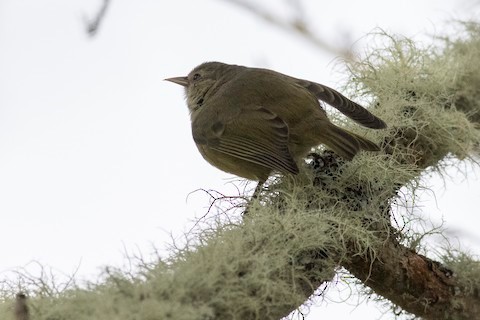
Hawaii Creeper, immature, dorsal view. (Hakalau Forest National Wildlife Refuge, Big Island, Hawaii; March 19, 2019.) © Jacob Drucker
Voice. Song is a simple, slightly descending trill, more mechanical than the trills of other Hawaiian honeycreepers:
Cf. Common Amakihi. The Hawaii Creeper is easily confused with the much more numerous and widespread Common Amakihi. They are approximately the same size, with roughly the same plumage patterns, general coloration, and bill shape.
Bill: Both the amakihi and the creeper have thin, decurved bills that taper to a needle-sharp tip. They differ in details that are not always apparent, but can be useful to distinguish them. The amakihi has a silvery-gray or blackish bill that droops at the tip, whereas the creeper has a horn-colored or dull-gray bill with a less pronounced curve near the mid-point. The creeper’s bill averages somewhat shorter than the amakihi’s.
Facial Pattern: Both the amakihi and the creeper typically have a blackish mask. On the amakihi, this is usually limited to the lores and a narrow area at the base of the bill, whereas the creeper’s blackish mask is typically more extensive, surrounding the eye. The creeper often, but not always, shows a pale brow, which the amakihi typically does not.
Notes
Monotypic species. The proper taxonomic placement of this species is unclear, as it may be more closely related to the Akikiki and alauahios or to the akepas. Different authorities have included it in both genera (Oreomystis and Loxops) but in light of the uncertainty it seems more appropriate to preserve its own genus until its relationships are clearer.
IUCN Red List Status: Endangered.
References
BirdLife International. 2016. Manucerthia mana. The IUCN Red List of Threatened Species 2016: e.T22720814A94684238. https://dx.doi.org/10.2305/IUCN.UK.2016-3.RLTS.T22720814A94684238.en. (Accessed May 18, 2020.)
eBird. 2020. eBird: An online database of bird distribution and abundance. Cornell Lab of Ornithology, Ithaca, N.Y. http://www.ebird.org. (Accessed May 18, 2020.)
Pratt, H.D. 2005. The Hawaiian Honeycreepers: Drepanidinae. Oxford University Press.
Pratt, H.D. 2020. Hawaii Creeper (Manucerthia mana). In Handbook of the Birds of the World Alive (J. del Hoyo, A. Elliott, J. Sargatal, D.A. Christie, and E. de Juana, eds.). Lynx Edicions, Barcelona. https://www.hbw.com/node/61442. (Accessed May 9 2020.)
Pyle, R.L., and P. Pyle. 2017. The Birds of the Hawaiian Islands: Occurrence, History, Distribution, and Status. Version 2 (January 1, 2017). http://hbs.bishopmuseum.org/birds/rlp-monograph/. B.P. Bishop Museum, Honolulu, Hawaii.
Xeno-Canto. 2020. Hawaii Creeper – Loxops mana. https://www.xeno-canto.org/species/Loxops-mana. (Accessed May 18, 2020.)

